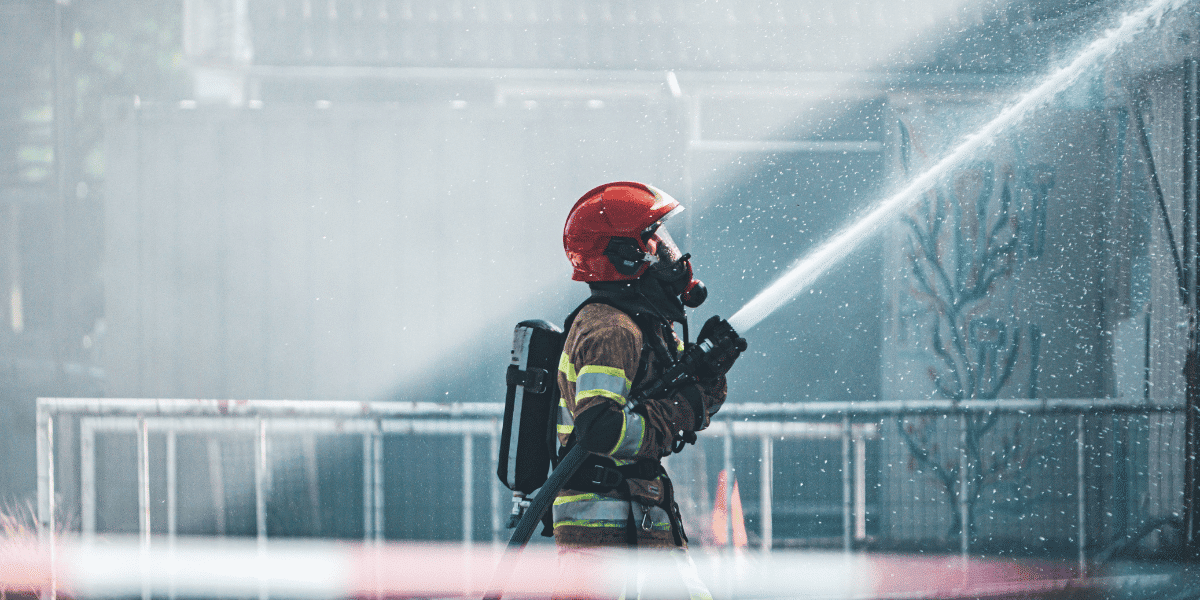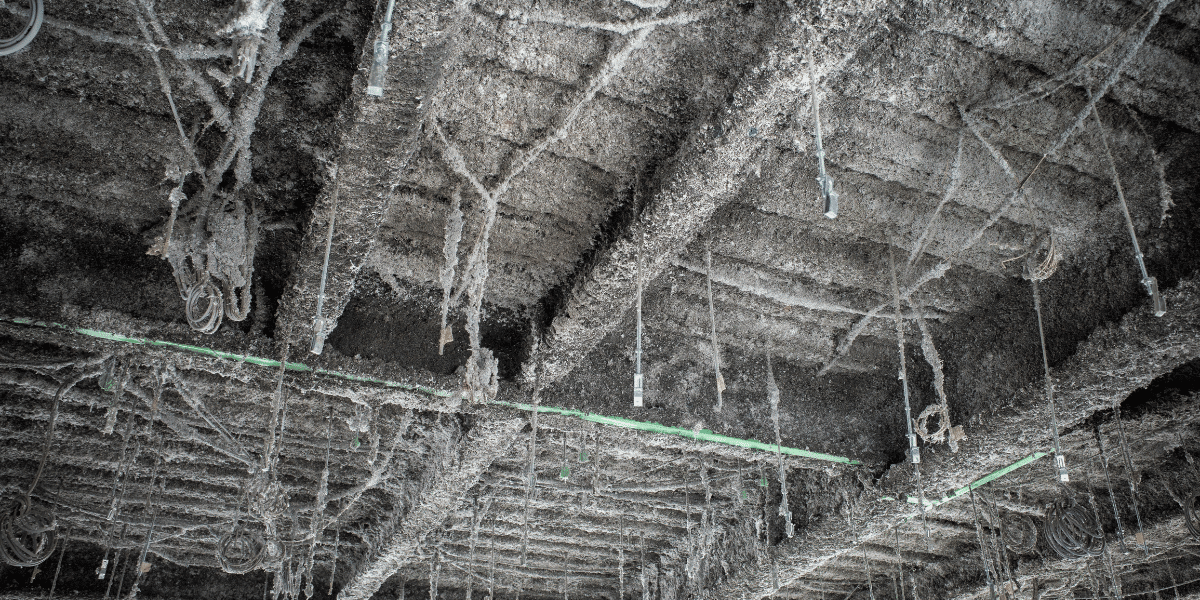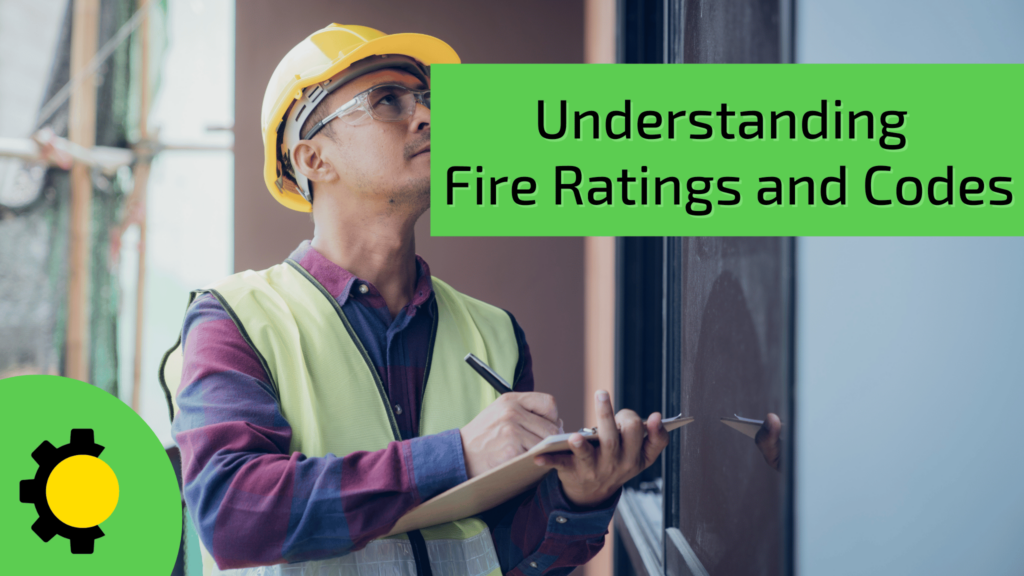Fire safety is a critical aspect of ensuring the well-being of people and protecting property in commercial buildings. When it comes to fire safety, understanding fire ratings and codes is essential. With that in mind, let’s explore the basics of fire ratings and codes.
Fire ratings are a way to measure how materials react to fire. They help us understand how quickly a fire can spread and how much smoke is produced. These ratings play a crucial role in selecting materials that can help prevent the spread of fire in commercial buildings.
Fire codes are regulations to ensure buildings are constructed and maintained so that hazards are minimized, and safety is maximized. These codes provide guidelines for the design, construction, and maintenance of commercial buildings. They prevent incidents and enable effective evacuation in case of emergencies.
By understanding these ratings and codes, we can make informed decisions about the materials used in construction and the safety measures. So, let’s look into these concepts and how they contribute to the fire safety of commercial spaces.

Fire Ratings
Fire ratings help us assess how materials respond to fire and determine their potential to spread flames and produce smoke. Understanding fire ratings is crucial in selecting the right materials for commercial buildings to mitigate fire hazards effectively.
One important rating is the Flame Spread Rating (FSR). It measures how quickly flames can spread across the surface of a material. A lower FSR indicates slower flame spread, making the material more resistant to fire.
Another critical rating is the Smoke-Developed Index (SDI), which measures the smoke produced by a material when it burns. Lower SDI values indicate that the material generates less smoke. This improves visibility during a fire and allows for easier evacuation.
Fire ratings also consider requirements for thermal barriers and ignition barriers. Thermal barriers protect materials like spray foam insulation from heat exposure. Ignition barriers, on the other hand, prevent the direct contact of flammable materials with potential ignition sources.
Fire ratings are determined through specific testing methods, such as the ASTM E84 and UL 723 standards. These tests measure the surface burning characteristics of building materials. They provide a standardized way to evaluate their fire performance.
Understanding fire ratings involves interpreting numerical values and comparing the ratings of different materials. By choosing materials with higher fire ratings, we can enhance the overall fire safety of commercial buildings.
Fire Codes and Regulations
Fire codes and regulations ensure buildings are built and maintained to reduce fire hazards and increase occupant safety. Let’s look at the basics of fire codes and the organizations responsible for creating and enforcing them.
One of the prominent organizations involved in fire codes is the National Fire Protection Association (NFPA). The NFPA establishes codes and standards for various aspects of fire safety, including the design, construction, and operation of buildings. Two notable NFPA codes are the NFPA 101: Life Safety Code and the NFPA 5000: Building Construction and Safety Code.
Another critical code is the International Building Code (IBC). The IBC provides a comprehensive set of regulations for building design and construction. It covers fire safety measures, structural integrity, and other factors that contribute to the overall safety of commercial buildings.
In addition, local fire codes and jurisdiction-specific regulations play a significant role in ensuring fire safety. Local authorities establish these codes to address regional considerations and specific hazards. It’s essential to be aware of and comply with these local fire codes when designing and maintaining commercial buildings.
Compliance with fire codes is crucial for building owners and contractors. Inspections and enforcement by fire marshals or authorities having jurisdiction ensure that buildings meet the necessary safety standards. Working closely with fire protection professionals and contractors helps ensure compliance and adherence to fire codes throughout the building’s life.
By understanding fire codes and regulations, building owners, contractors, and occupants can create and maintain safer commercial spaces. This reduces the risk of fire incidents and facilitates effective emergency response.

Fireproofing
Fireproofing is a crucial aspect of fire safety in commercial buildings. It involves applying specialized materials or coatings to surfaces to increase their resistance to fire. Let’s explore the importance of fireproofing and its role in enhancing fire safety in simpler terms.
Fireproofing materials, such as fibrous plasters, intumescent coatings or fire-resistant spray foams, are applied to structural elements. These materials expand and form a protective layer when exposed to high temperatures. They insulate the underlying structure and prevent it from weakening or collapsing during a fire.
The purpose of fireproofing is to delay the spread of fire and provide additional time for evacuation and emergency response. It acts as a barrier, protecting critical structural elements and enhancing the overall fire resistance of the building.
By investing in fireproofing, commercial building owners can significantly reduce the risk of fire-related damages. Fireproofing is a proactive measure that adds an extra layer of defense against the devastating impact of fires.
When considering fireproofing options for your commercial building, it is essential to consult with experienced and licensed contractors. Their expertise and knowledge will ensure that your building receives the most effective fire protection.
Remember, fireproofing is a valuable investment that enhances the fire safety of your commercial space. It provides peace of mind and protection against the destructive nature of fires.
Conclusion
Understanding fire ratings and codes is essential for ensuring fire safety in commercial buildings. By familiarizing ourselves with fire ratings, we can select materials that resist the spread of flames and minimize smoke production. Likewise, adhering to fire codes and regulations helps create safer commercial spaces and facilitates effective emergency response.
At Sunlight Contractors, we specialize in providing top-notch fireproofing services for commercial buildings.
Our experienced team can assist you in implementing effective fire protection measures tailored to your specific needs. Take the first step towards enhancing the fire safety of your commercial space by contacting us today.
Contact us today to create a safer environment and protect lives and property from the devastating effects of fires.

